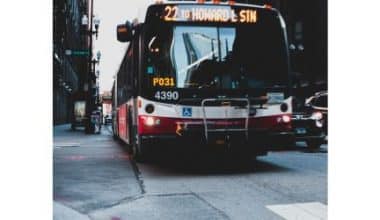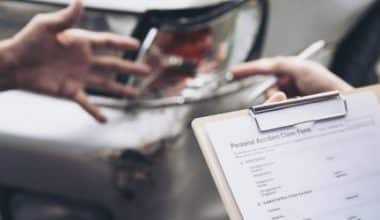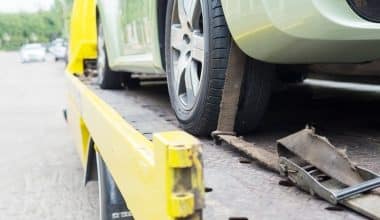Property damage liability insurance covers the damage you do to another person’s property in the event of a car accident. The insurance companies cover damage to other automobiles, buildings, and structures, such as fences and telephone poles. If you are sued for the same types of damages, it may also cover your legal fees.
However, property damage liability does not cover injuries caused by a collision. It also does not cover car damage, so you’ll need comprehensive collision coverage on your policy to cover repair costs.
Here’s how it works and how much coverage you’ll need.
What Is Property Damage Liability?
Property damage liability is a provision in a car insurance policy that assists in the repair of damage to another person’s vehicle or property. If you are at fault for the collision, the coverage does not cover damage to your vehicle. However, if you are involved in an accident and are found to be at fault, you may be able to file a claim under your property damage liability coverage to pay for the damage to another person’s vehicle, property, or even structures.
What Is the Procedure for Establishing Property Damage Liability?
A portion of the liability insurance coverage on an auto policy covers third-party property damage. If you cause an accident and cause damage to someone else’s property, your insurance company will pay on your behalf up to the coverage maximum indicated on the declarations page of your insurance policy.
The majority of states provide split coverage limits, while others provide combined single-limit liability insurance policies. There is a limit per person and for each accident, the insurance will pay with split limits. For example, a 100/300/50 split limit policy means you have liability coverage up to:
- $100,000 in bodily injury liability per person
- $300,000 in bodily injury liability per accident
- $50,000 in property damage liability per accident
In this case, the auto insurer’s maximum liability for property damage caused by an accident is $50,000. Any amount payable more than your coverage limit is your responsibility to pay out of pocket.
With a combined single limit, you have one sum to assist in paying for all of your liability in an at-fault accident. For example, a combined single limit of $300,000 means that your auto insurer will pay up to $300,000 for the entire accident. This includes bodily injury and property damage.
What Does Property Damage Liability Cover?
If you cause damage and are found to be at blame for the accident, property damage liability will cover that person’s property. Cars, houses, fences, mailboxes, and commercial storefronts are some of the types of property covered. It also covers public property that is damaged in an accident, such as light poles or road signs.
If you are involved in a serious property damage claim and must go to court, this coverage type may also cover your legal bills. If you hit a storefront and it has to close for repairs, your car insurance company may cover the owner’s lost earnings as well.
It is important to understand that property damage liability coverage does not cover your losses, such as vehicle damage or medical bills. It especially covers the property of others.
Optional coverage categories such as collision, comprehensive, and medical payments coverage may assist in covering the costs if your vehicle is damaged in an accident or if you require medical treatment.
Experts advise evaluating your auto policy to discover what types of coverage are included. If you don’t see the coverage you want, call your insurance agent to add it before an accident occurs. You can compare quotes from several insurers to locate insurance that gives the best coverage for your needs at an affordable price.
Who Needs Coverage for Property Damage?
Almost every state has minimal car insurance, which includes property damage liability. In Massachusetts, for example, drivers must carry at least $5,000 in property damage liability coverage. A minimum of $25,000 in property damage liability coverage must be carried by Alabama drivers.
Regardless of how frequently you drive, you are legally required in your state to have at least the minimum amount of auto coverage or provide proof of financial responsibility.
What Is the Cost of Property Damage Coverage?
Your car insurance policy determines the cost of property damage coverage. Insurance costs vary depending on several factors, including where you reside, the sort of car you drive, your credit history, age, and driving record. You have the option of selecting your property damage liability coverage limit, which determines the maximum amount your insurance will cover in the event of an accident. In general, the higher your level of coverage, the higher your premium.
What Kind of Liability Coverage Should You Get?
Drivers must possess at least the state-mandated minimum amount of property damage liability insurance. If you do not have the required coverage, you may be cited for driving without appropriate insurance, which carries a fine (at the very least) and frequently the necessity to carry an SR-22 certificate.
Drivers should, however, consider acquiring additional liability coverage than is required. There is no guarantee that the state’s mandatory minimum coverage amount will cover the full cost of an accident. If you have only $5,000 in coverage and cause $25,000 in property damage, you may be liable for the $20,000 difference.
In most circumstances, the level of coverage you receive is a personal option. However, if your vehicle is financed or leased, or if you must carry an FR-44 certificate, you may be forced to have higher coverage levels. In most circumstances, however, the liability limits are entirely up to you.
Increasing your coverage limits may provide peace of mind if you desire the most protection possible. Just keep in mind that the more coverage you carry, the higher your insurance rates may be.
How Can You Submit a Liability Claim for Property Damage?
A property damage liability claim is filed in the same way as any other sort of car insurance claim. Although the specific steps will differ depending on your insurance carrier, here are some suggestions if you caused the damage:
- Locate the property owner: Following the incident, locate the property owner and obtain their contact information. If they are not there, leave a note that includes your name, phone number, insurance company, and policy number.
- Take pictures of the damage: When it is safe, take photos and videos of any property damage at the scene of the accident.
- Contact your auto insurance company: Please notify your insurance company of the occurrence. You will be required to supply paperwork as well as photo and video evidence of the damage. Your claims adjuster will collaborate with the opposing party to assess the cost of repairs and remedy the damage you caused.
- Check with your provider to determine if there are any other requirements.
Is It Necessary to Have Property Damage Liability Coverage?
Yes, most states require property damage liability coverage, which is automatically included as part of your liability coverage. The amount of property damage coverage you must obtain, however, varies by state. Most states require that you carry a certain amount of property damage coverage, but the amount can change if you drive a leased vehicle. Your leasing company may require you to carry a policy with higher coverage limits than the state minimum because they have a financial stake in your vehicle.
What Factors Influence the Amount of a Claim?
The cost of repairs, which could be a few hundred dollars or thousands of dollars, is the most essential consideration in determining the size of a claim. For example, if you back into a parked car and cause $200 in damage, your property damage coverage would most likely be deemed a minor claim. If, on the other hand, you run off the road and hit a fence that costs $10,000 to repair, your property damage liability claim would be significantly larger, at $10,000. When your policy renews, larger claims may have a greater impact on your car insurance rate.
What Is the Best Property Damage Liability Amount?
The appropriate quantity of property damage liability is determined by the level of coverage required. As a general guideline, you should ensure that you have adequate coverage in the event of a major accident with high costs. Experts advise considering how much you can afford to spend out of pocket and how much coverage you need to feel safe.
What Other Types of Car Insurance Coverage Do You Need?
Most states mandate drivers to carry bodily injury liability coverage in addition to property damage liability coverage, with minimum coverage levels per person and accident. In addition, some drivers must carry uninsured and underinsured motorist coverage as well as personal injury protection (PIP).
Is Property Damage Synonymous With a Collision?
No, property damage liability and collision coverage are not the same thing. Property damage liability insurance covers the expense of restoring damage to another person’s property, including their vehicle. Collision coverage covers the expense of repairing your vehicle in the event of an accident.
How Much Does Car Insurance Cost?
The cost of car insurance is determined by a variety of factors, like your location, vehicle makes and model, driving record, credit history, and other factors. According to a BusinessYield study, the average cost of car insurance for a full coverage policy in 2023 will be $2,014 per year. You can, however, look for less expensive car insurance that meets your budget.
How Can I Claim Property Damage Liability Insurance?
If another driver causes damage to your property, you can submit a claim with the other driver’s insurance company. At the scene of the accident, exchange information such as the person’s name, insurance card information, and license plate number.
If possible, photograph the scene. Make a police report about the collision; the insurance company may want a copy.
Know what to do after a car collision to protect yourself from other drivers who may try to exploit the situation.
Is There a Deductible for Liability Claims for Property Damage?
Property damage liability insurance does not have a deductible. When there is a claim, the deductible is the amount of money you are personally responsible for paying.
Conclusion
Property damage liability insurance is an essential type of insurance for all drivers. It can protect you from financial loss if you are responsible for damaging someone else’s property in a car accident. This type of insurance is typically required by law, but it is important to purchase enough coverage to meet your needs.
When choosing a property damage liability insurance policy, it is important to consider the following factors:
- The amount of coverage you need
- The cost of the policy
- The reputation of the insurance company
It is also important to read the policy carefully to understand what is covered and what is not.
If you have any questions about property damage liability insurance, be sure to speak with an insurance agent. They can help you choose the right policy for your needs and budget.
- Extended Car Warranty Insurance: Best Plans for 2023
- THE BEST CHEAP CAR INSURANCE IN KENTUCKY 2023
- BEST CHEAP CAR INSURANCE IN COLORADO FOR 2023
- Citizens Property Insurance Review: Cost & Coverage
- Malpractice Insurance: A Complete Guide






